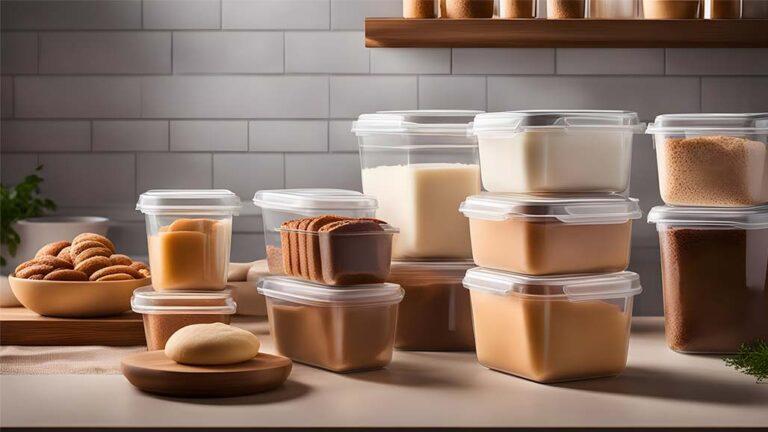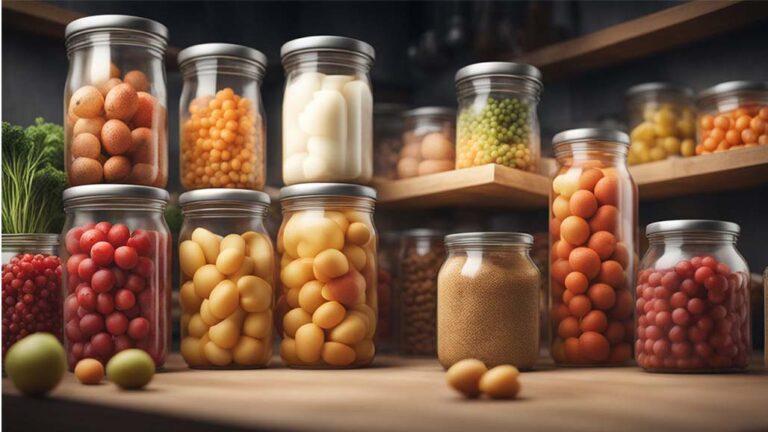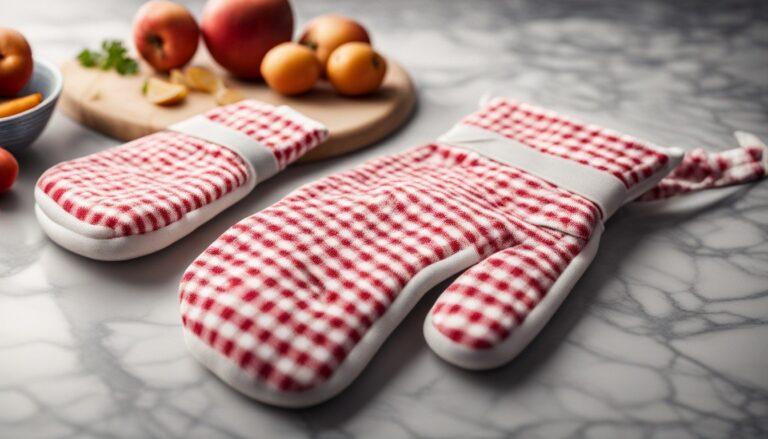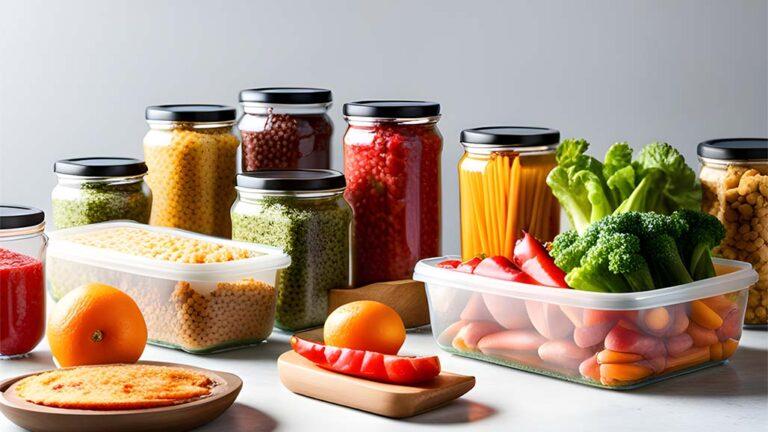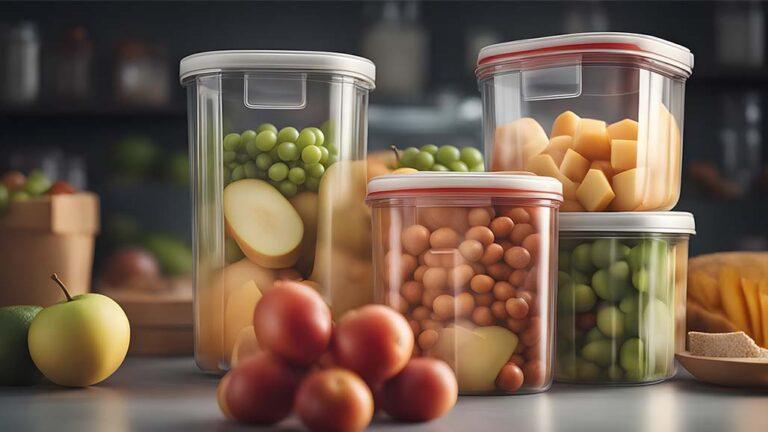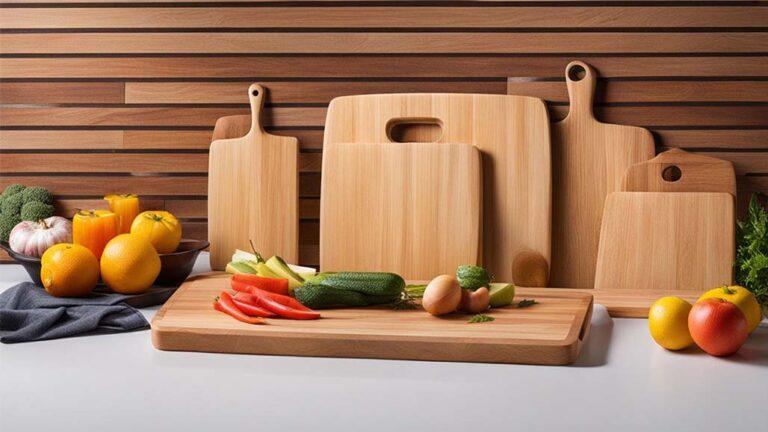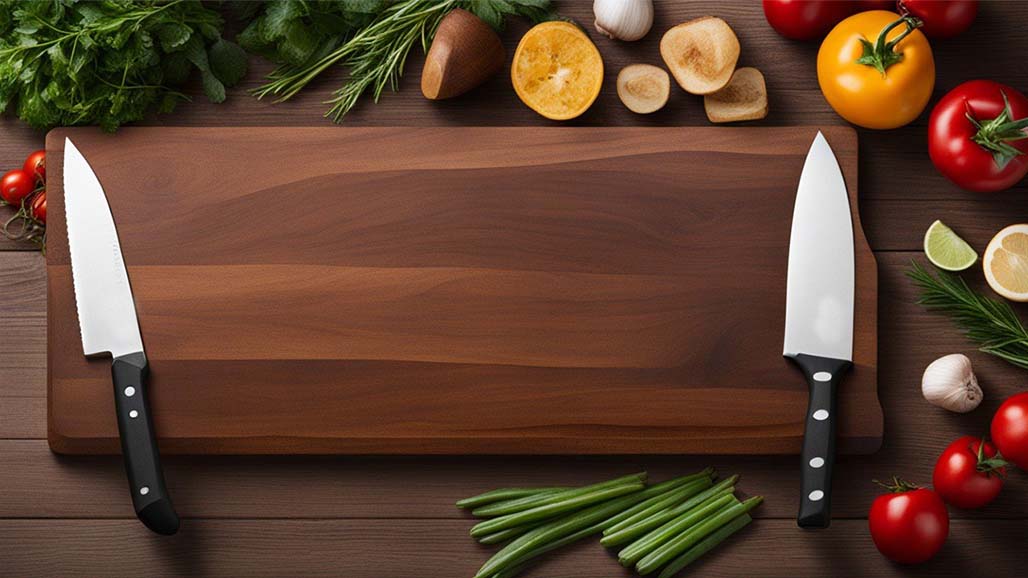
Introduction:
When it comes to the world of culinary preparation, what type of wood-cutting board is best for knives? One often overlooked but crucial tool is the cutting board. While it may seem like a simple piece of kitchen equipment choosing the right cutting board is more important than you might think. In this comprehensive guide. We will explore the diverse world of wood cutting boards and delve into the question that has been on the minds of many home chefs what type of wood cutting board is best for knives?
How to Pick a Cutting Board That Suits Your Needs
To get the ideal cutting board, you must first comprehend your requirements and preferences. It’s crucial to select a type of wood that is compatible with your culinary objectives because different types of wood each have unique advantages. The correct cutting board can transform your kitchen, whether you’re an accomplished home chef or a professional chef.
Maple Cutting Boards: A Balance of Beauty and Durability
Maple cutting boards are a popular choice for many chefs. They are not only visually appealing but also durable and knife-friendly. Maple’s tight grain structure makes it less prone to scoring from knife cuts, ensuring that your knives stay sharper for longer.
Cherry Cutting Boards: Adding Elegance to Your Kitchen
Cherry wood cutting boards are prized for their beautiful reddish-brown color and natural luster. They are not only useful, but they also give any kitchen a sense of class. Discover how cherry wood can be the perfect choice for both aesthetics and performance.
Walnut Cutting Boards: A Dark Horse for Knife Lovers
Walnut cutting boards are the darlings of knife enthusiasts. Known for their rich, dark color and fine grain, they are not only visually striking but also gentle on your knives. Explore why walnut cutting boards have become the preferred choice for knife connoisseurs.
Bamboo Cutting Boards: Eco-Friendly and Versatile
For those with eco-conscious values, bamboo cutting boards are an excellent option. They offer durability, sustainability, and versatility. Learn why bamboo cutting boards are gaining popularity and how they contribute to a greener kitchen.
How to Use Your Cutting Board Safely
Using a cutting board safely is paramount in any kitchen to prevent accidents, maintain the quality of your knives, and ensure the cleanliness of your food preparation area. Here are some essential tips and practices for using your cutting board safely:
1. Proper Knife Techniques
Mastering the art of using knives safely on a cutting board is crucial. Follow these guidelines:
- Grip the Knife Correctly: Hold the knife with a firm grip, placing your thumb and forefinger on the handle and your other fingers wrapped around the handle for stability.
- Use the Claw Grip: When chopping or slicing ingredients, use the “claw grip” with your non-knife hand. Curl your fingertips under and keep your knuckles in line with the knife blade to protect your fingers from accidental cuts.
- Focus on Control: Keep your cutting strokes controlled and deliberate, avoiding excessive force or speed. Rushing can lead to accidents.
- Cut Away from Your Body: Always cut away from your body to prevent accidental self-injury.
2. Choose the Right Cutting Surface
Selecting the appropriate cutting board is essential for safety:
- Stability: Ensure your cutting board is stable and doesn’t wobble or slip while you work. Use a damp cloth or a non-slip mat underneath to prevent movement.
- Size: Choose a cutting board that provides enough space for your cutting tasks without overcrowding the surface. Overcrowding can lead to accidents.
- Separate Boards: Use separate cutting boards for different types of ingredients, such as one for vegetables and another for meats, to prevent cross-contamination.
3. Avoid Cross-Contamination
Prevent the transfer of bacteria from one food item to another:
- Color-Coding: Consider color-coded cutting boards for different food groups (e.g., red for meat, green for vegetables) to minimize the risk of cross-contamination.
- Cleaning Between Uses: Clean and sanitize your cutting board between tasks, especially when switching from cutting raw meats to other ingredients.
4. Cleaning and Maintenance
Proper cleaning and maintenance of your cutting board are essential for both safety and hygiene:
- Immediate Cleaning: Wash your cutting board with hot, soapy water immediately after use. This helps remove food particles and prevents bacterial growth.
- Sanitizing: Periodically sanitize your cutting board by using a solution of one part vinegar to four parts water or a mixture of bleach and water. Rinse thoroughly afterward.
- Drying: Allow your cutting board to air-dry completely before storing it to prevent moisture-related issues like warping or mold.
5. Regular Inspection
Regularly inspect your cutting board for signs of wear and tear:
- Deep Cuts: If your cutting board develops deep cuts or grooves that cannot be sanded out, it may be time to replace it. These grooves can trap food particles and harbor bacteria.
- Cracks or Splits: Cracks or splits in the wood can compromise the structural integrity of the board. Replace it if you notice these issues.
6. Safe Disposal
When a cutting board has reached the end of its usable life, dispose of it safely:
- Recycling or Composting: If your cutting board is made of untreated wood, it can often be recycled or composted. Check local guidelines for disposal options.
- Trash: If you’re cutting board contains adhesives or finishes that cannot be recycled or composted, dispose of it in the regular trash.
By following these guidelines and practicing safe knife techniques, you can use your cutting board safely while minimizing the risk of accidents, cross-contamination, and foodborne illnesses in your kitchen.
Wood Cutting Boards Are Better for Knives
In the age-old debate over which cutting board material is best for knives, wood emerges as the clear winner. While plastic and glass cutting boards have their merits, wood offers a combination of advantages that make it the preferred choice for both professional chefs and home cooks. Let’s explore why wood cutting boards are superior when it comes to preserving the sharpness and longevity of your knives.
1. Knife-Friendly Surface
One of the primary reasons wood cutting boards are favored is their knife-friendliness. Wood provides an ideal cutting surface that is gentle on knife edges. Wood is forgiving and less prone to cause your blades to be prematurely dull or chip than hard materials like glass or some types of plastic boards.
When using a wooden cutting board, your knife’s blade leaves a small imprint on the material, maintaining its sharpness. On hard surfaces like glass, however, the knife’s edge may be put through unnecessary strain, hastening wear and tear.
2. Self-Healing Properties
Wooden cutting boards possess a unique self-healing quality. Over time, knife cuts in the wood tend to close up, thanks to the natural properties of the material. This self-healing characteristic not only protects your knives but also contributes to the board’s longevity.
As you use your wood cutting board, the fine cuts and scratches left by your knife tend to fill in and blend with the natural grain of the wood. This makes wood boards more forgiving and less prone to retaining deep grooves or damage that can harbor bacteria and compromise the surface.
3. Reduced Bacterial Growth
Studies have demonstrated that contrary to popular belief, wood-cutting boards are more hygienic than plastic ones. The natural antibacterial qualities of wood prevent the development of bacteria. These characteristics, along with the previously mentioned self-healing capability, make wood-cutting boards a safer option for food preparation.
On the other hand, even after thorough cleaning, plastic cutting boards are prone to creating deep knife grooves that might harbor bacteria. In comparison, wood is a more hygienic surface due to its intrinsic antibacterial characteristics and capacity to self-heal.
4. Aesthetic Appeal
Beyond their functional advantages, wood cutting boards also contribute to the aesthetics of your kitchen. Your kitchen environment gains a touch of sophistication and rustic appeal from the wood’s natural warmth and beauty. A well-kept wood cutting board can become the center of attention in your kitchen improving both its usability and aesthetic appeal.
Different Types of Wood Cutting Boards: Advantages and Disadvantages
Each species of wood has distinctive qualities that offer both benefits and drawbacks. You may choose the wood that best meets your demands by being aware of these characteristics.
Advantages of Wood Cutting Boards
Discover the common advantages shared by all wood cutting boards, such as their aesthetic appeal, knife-friendliness, and durability.
Disadvantages of Wood Cutting Boards
Despite their many advantages, wood cutting boards are not without their drawbacks. Learn about potential issues like maintenance requirements and susceptibility to moisture.
Choose a Wood Cutting Board That Fits Your Needs
Making the best wood cutting board choice involves more than just considering its appearance and cost. It is crucial to take into account elements like size, thickness, and certain use situations to make sure that your culinary requirements are met. Let us look at how to select a wood cutting board that precisely matches the needs of your kitchen.
Size Matters
The size of your cutting board can significantly impact your cooking experience. The ideal size depends on your kitchen space, cooking style, and the types of dishes you commonly prepare. Here’s how to determine the right size for your needs:
1. Consider Your Kitchen Space: Measure the available countertop space in your kitchen. Your cutting board should fit comfortably within this area, allowing ample room for food preparation.
2. Versatility: If you have limited space, consider a versatile cutting board that can handle various tasks. A medium-sized board is often a practical choice.
3. Specialized Use: For specific tasks like butchering large cuts of meat or carving roasts, a larger board is beneficial. These boards provide ample space for maneuvering and contain the mess.
4. Multiple Boards: Some cooks prefer to have multiple cutting boards of different sizes for different tasks. This allows for efficient multitasking during meal preparation.
Thickness Considerations
The thickness of your wood cutting board affects both its durability and stability. Different thicknesses are suitable for various purposes, so choose wisely:
1. Thin Boards (3/4 inch or less): These are lightweight and easy to store. They are suitable for slicing fruits and vegetables, as they won’t dull your knives.
2. Medium Boards (Around 1 inch): Medium-thickness boards strike a balance between durability and weight. They are versatile and can handle a variety of cutting tasks.
3. Thick Boards (1.5 inches or more): Thick boards are robust and ideal for heavy-duty cutting, such as chopping bones or tenderizing meat. They are also more stable on the countertop.
Special Features
Beyond size and thickness, some wood cutting boards come with special features that can enhance your cooking experience:
1. Juice Grooves: Boards with juice grooves are ideal for cutting juicy fruits, meats, or vegetables. The grooves prevent liquids from spilling onto your countertop.
2. Built-in Compartments: Some cutting boards have compartments for storing chopped ingredients, making it easy to transfer them to your cooking pots or containers.
3. Handles: Handles or grips on the sides of the board can make it easier to carry or maneuver, especially when transferring ingredients.
4. Reversible: Many cutting boards are reversible, allowing you to use both sides. This can be handy for different types of food or to prolong the board’s lifespan.
Material Selection
While we’re primarily focusing on wood cutting boards it’s worth noting that different types of wood offer unique characteristics. Review the earlier sections of this guide to understand the advantages of various wood types such as maple, cherry, walnut, and bamboo. Choose a wood that aligns with your culinary preferences and values.
Maintenance Considerations
Finally, think about the level of maintenance you’re willing to undertake. Some wood-cutting boards require more frequent oiling and seasoning to keep them in top shape, while others are more forgiving in this regard. Make sure the maintenance routine aligns with your lifestyle and kitchen habits.
In conclusion, choosing the right wood cutting board is a personal decision influenced by your kitchen space, cooking style, and culinary preferences. By considering size, thickness, special features, wood type, and maintenance requirements, you can select a cutting board that will be your trusted kitchen companion for years to come.
Take Care of Your Wood Cutting Board
Caring for your wood cutting board is not just a matter of maintenance; it’s a practice that can extend its lifespan and preserve its beauty for years to come. Proper care ensures that your cutting board remains a reliable kitchen companion and continues to provide you with a safe and effective workspace.
Oiling and Seasoning
Wood, as a natural material, requires nourishment to maintain its integrity. Regular oiling and seasoning are essential to keep your cutting board in prime condition. Here’s how you can do it:
1. Choose the Right Oil: Opt for food-grade mineral oil or beeswax. These oils can be consumed without risk and won’t deteriorate over time.
2. Clean Thoroughly: Before applying oil, make sure your cutting board is clean and dry. You can use a mixture of vinegar and water for cleaning.
3. Apply Oil Generously: Using a clean, lint-free cloth or a paper towel, apply a generous amount of oil to the entire surface of the cutting board. Ensure that you cover both sides and the edges.
4. Allow Absorption: Let the oil sit on the board for several hours or overnight to allow it to penetrate the wood fibers.
5. Wipe Excess: After the oil has had time to soak in, wipe off any excess with a clean cloth. Your cutting board should have a slight sheen but not feel oily.
6. Repeat as Needed: Depending on usage, repeat the oiling process every few weeks or when the board starts to look dry. Some boards may require more frequent oiling than others.
Stain Removal
Wood cutting boards are susceptible to stains from certain foods and ingredients. Quick and effective stain removal ensures your cutting board remains both functional and aesthetically pleasing:
1. Lemon and Salt: For stubborn stains or odors, cut a lemon in half and rub it over the affected area. Sprinkle salt over the lemon juice and scrub with a cloth or sponge. Rinse and dry thoroughly.
2. Baking Soda and Water: Create a paste by mixing baking soda and water. Scrub the discolored area gently after applying the paste. Rinse and dry.
3. Hydrogen Peroxide: For particularly tough stains, mix equal parts hydrogen peroxide and water and apply to the stain. Allow it to sit for a few minutes before rinsing and drying.
4. Stubborn Stains: Some stains may require multiple treatments. When attempting to remove stains, be persistent and patient.
When to Replace Your Cutting Board
Despite your best efforts in maintenance and care, there may come a time when your cutting board needs replacement. Signs that it’s time for a new cutting board include:
1. Deep Grooves: If your cutting board has deep grooves or cuts that cannot be sanded out, it’s time to replace it. These grooves can harbor bacteria and compromise the board’s structural integrity.
2. Cracks and Splits: Cracks and splits in the wood can make the board unsafe for food preparation. They are also challenging to clean effectively.
3. Odor Permeation: If your cutting board retains strong odors even after thorough cleaning, it may be time for a fresh start.
4. Excessive Stains: While some staining is normal, excessive or stubborn stains that affect the appearance of the board may warrant replacement.
5. Warping or Bowing: A cutting board that no longer lays flat on the countertop is not suitable for safe food preparation.
Taking care of your wood cutting board is a rewarding practice that ensures it remains a cherished kitchen tool. By following these maintenance tips and knowing when it’s time for a replacement, you can enjoy the benefits of a well-preserved cutting board in your culinary endeavors.
Tips for what type of wood cutting board is best for knives?
Selecting the ideal wood cutting board to complement your knives and enhance your culinary experience requires thoughtful consideration. The following advice will assist you in making an informed decision:
1. Consider Your Knife Collection
The type of knives you use plays a crucial role in determining the best wood cutting board. If you have high-quality, expensive knives, it’s essential to choose a board that will protect their sharp edges. Hardwoods like maple and walnut are gentle on knives and are excellent choices for preserving blade integrity.
2. Think about Cutting Surface Size
Consider the available space in your kitchen and your typical cooking tasks. If you have limited counter space, a medium-sized cutting board may be practical. However, if you frequently prepare large cuts of meat or perform extensive meal prep, a larger cutting board is advisable.
3. Assess Thickness
The thickness of your cutting board influences its stability and durability. Thicker boards provide a more stable cutting surface, especially when handling heavy-duty tasks like butchering. However, thicker boards can be heavier and more challenging to store. Choose a thickness that aligns with your cooking needs and storage options.
4. Examine Special Features
Some wood cutting boards come with additional features like juice grooves, built-in compartments, or handles. Juice grooves are excellent for preventing liquids from spilling onto your countertop, while compartments can simplify ingredient transfer. Handles or grips make it easier to carry and maneuver the board. Consider whether these features align with your cooking style and preferences.
5. Evaluate Wood Type
Different wood types offer distinct advantages. If you prioritize durability and knife-friendliness, consider maple or walnut. For an elegant aesthetic, cherry wood is an excellent choice. Bamboo is sustainable and resistant to moisture, making it a practical and eco-friendly option.
6. Think about Maintenance
The level of maintenance you’re willing to undertake is essential. Some wood cutting boards require regular oiling and seasoning to keep them in top condition. If you prefer low-maintenance options, choose woods that are less demanding in terms of care.
7. Balance Aesthetics and Functionality
Consider the visual appeal of the cutting board in your kitchen. A well-crafted wood cutting board can enhance the overall aesthetics of your cooking space. Choose a wood type and design that complements your kitchen’s style while ensuring it meets your functional needs.
8. Budget Wisely
Wood cutting boards come in a wide range of prices. While premium hardwoods like walnut can be expensive, there are budget-friendly options available as well. Establish a spending limit that is in line with your needs and interests, then look at options within that range.
9. Read Reviews
Before making a final decision, read reviews and seek recommendations from other cooks or chefs. Real-world experiences and insights from users can provide valuable information about a specific cutting board’s performance and durability.
10. Trust Your Instincts
Ultimately, the best wood cutting board for knives is one that feels right for you. Trust your instincts and choose a board that you connect with on a personal level. The right cutting board can elevate your cooking experience and become an essential tool in your culinary journey.
Conclusion
In the world of culinary craftsmanship, the choice of a wood cutting board can be as important as the selection of ingredients and knives. As we’ve explored the characteristics of various wood types, their advantages and disadvantages, and the crucial aspects of safe usage and maintenance, one thing becomes clear: the question of what type of wood cutting board is best for knives? Is not easily answered with a single choice.
The best wood cutting board for you ultimately depends on your unique needs, preferences, and culinary aspirations. Whether you choose the resilient maple, the knife-friendliness of walnut, the sustainability of bamboo, or the timeless elegance of cherry, selecting the proper wood cutting board can improve your dining experience and preserve the sharpness of your blades.
Explore the world of wood-cutting boards, think about what your kitchen needs, and enjoy the search for the ideal board that will be your dependable cooking partner for many years to come. Cheers to cutting!

